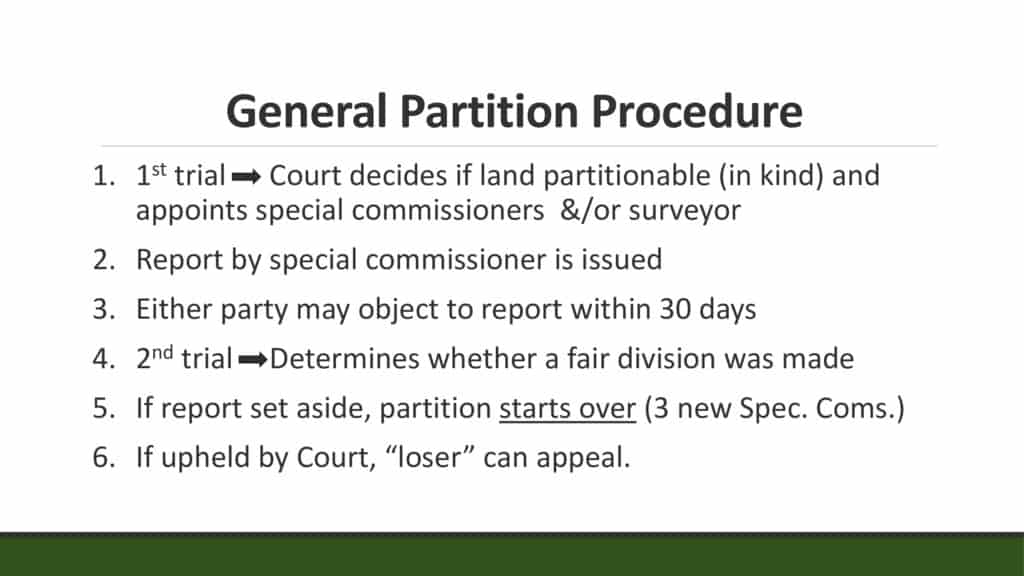Summary of the Land Partition Process First Trial
I’m Philip Hundl. I’m an attorney in Texas. My practice focuses on representing landowners facing eminent domain proceedings, and landowners involved in land partitions.
Focusing on land partitions, in prior videos we talked about some of the initial earlier steps. Now I’d like to go into what happens if the land is not heirs’ property. If the land is not heirs’ property, then a petition is filed and the other side answers. One or more of the co-owners, or plaintiffs, file suit against the other co-owners. All co-owners need to be involved in the suit.
The court is going to make sure that all necessary parties are involved which means all co-owners are involved. Those other co-owners will be defendants.
Oftentimes, you’ll see the defendants file counterclaims against the plaintiffs. And so really, essentially you have everybody with their own claims for partition.
It’s a two step process I always say. There’s a first trial and there’s a second trial. The following is a general description of the non-heirs partition process.

But once petition is filed, ultimately there will be the first trial, and it’s like other civil litigation. Now in between the petition being filed and the first trial, there can be discovery conducted, depositions taken, and experts hired by each party.
At the First Trial the Court Determines Whether the Land Can Be Partitioned
And then at that first trial, the court does a few things. The court determines whether the land can be partitioned or not. If it can and typically if it’s more than several acres and there’s not significant improvements on those very small tracts of land, the court will usually determine that it can be partitioned in kind. So the land can be divided amongst the co-owners.
And let’s also remember this too, even if you have, let’s just say you have four co-owners, each one owning 25%. That doesn’t mean that the land has to be divided four ways. If three of the co-owners say, “We want all our property to remain in the undivided interest,” then the court, then what’s being requested is a 25/75 split. That’s not uncommon and I’ve had several of those as well.
At that first trial you’re asking the court to determine the specific ownership of the various parties. Sometimes that’s a really easy cut and dried. Sometimes it’s not.
Sometimes there are multiple tracts and the ownerships vary with different tracts from different counties. You can have multiple counties and multiple tracts from multiple counties involved. Where is venue proper? That particular partition case can be filed in any one of those counties. And so that’s something to consider.
The court would also give some special instructions if the court determines that it’s necessary or that it wants to, or that it’s been requested to give special instructions to the special commissioners.
Also, the court may appoint a surveyor and we’re talking about this is the standard non-heir partition chapter 23. And then also, are there any offsets or credits to be given to any particular parties because of what they’ve done with the land, either improving the land, or paying off certain taxes, or things like that.
And so before, I think we said in an earlier video if someone has built a road or a barn on the property and they actually want some credit for that, in addition to their 25% interest for using our example. Then that’s what you would ask the court to do and the court would do that at that first hearing.
And the court very importantly, would appoint special commissioners at that first hearing. And then shortly thereafter the special commissioners would receive a writ of partition so that they would begin, they would get served with or provided a copy of the order of the court making that determination if the land can be partitioned and that they’ve been appointed as commissioners, special commissioners for this partition.
So hopefully that’s helpful. We’re getting kind of deep into the partition proceeding so hopefully this is helpful.
